Liz Hilliard, 70, is living, breathing proof that age is just a number. The pilates instructor, who trains out of her studio Hilliard Studio Method, discovered the workout when she was 48, and completely transformed her approach to health. Over the years she has managed to learn a few things about longevity, revealing her secrets in an interview with Body Network.
Liz Used to Rely on Traditional Workouts
 Liz Hilliard
Liz Hilliard
Liz, who lives in Charlotte, North Carolina, explains that she was athletic throughout her childhood and enjoyed playing basketball and other team sports. “Traditional workouts always felt boring and offered minimal results for the time and energy put into them, " she says. Until I was in my late 40s, I relied on tennis and walking as my main sources of exercise.
RELATED: I'm a Personal Trainer and These 5 Moves Banished My Clients' Bat Wings in Weeks
She Discovered Pilates at Age 48
 Liz Hilliard
Liz Hilliard
“At age 48, I attended my first Pilates class and immediately felt incredibly challenged. I even had fun, which led me to become certified in Pilates,” she says. In 2002, she opened her first personal Pilates training studio. “It was a successful business, and my clients were seeing real results. However, at age 51, while going through menopause, I noticed despite my Pilates workout, my belly fat was increasing, and my overall strength was decreasing as well, aka flabby arms and sagging bottom."
Fusing Strength Training with Pilates Was a Game-Changer
 Liz Hilliard
Liz Hilliard
"Inspired by my daughter, who was getting married and sculpting up for her wedding, I began researching heavy resistance training and hired my own personal trainer to try to sculpt my 51-year-old, menopausal body. We implemented heavy weight training, and I was determined to debunk the ‘bulking’ myth that most women feel about weightlifting," Liz says.
"The short story is that adding heavier resistance training to my core-centric Pilates workout began to sculpt my body in ways I hadn’t seen before using only traditional Pilates. That’s when I devised my Method. By incorporating heavy resistance with the core-centric exercises of Pilates, the Hilliard Studio Method was born."
She Shaved Inches Off Her Waistline
 Shutterstock
Shutterstock
Hillard, who has since authored the book "Be Powerful: Find Your Strength at Any Age" and co-hosts the Be Powerful Podcast, has remained 135 pounds throughout most of her life. “Muscle weighs more than fat, so I was replacing adipose tissue with muscle. My body was sculpting and changing at a rapid rate, especially given that I was in the throes of menopause. I lost inches around my waist, my arms became strong and sculpted, my abs flattened, and my glutes lifted. My entire body changed over the course of a year or less,” she says.
She Works Out 4 to 5 Times a Week
 Liz Hilliard
Liz Hilliard
What are the most important things she learned about getting in shape? “Find a workout that you enjoy, or you won’t stick with it. Our lives are busy, so finding a workout that efficiently provides resistance combined with stretch and enough cardio is essential. I do my workout at Hilliard Studio Method 4 to 5 times a week because we change the workout daily, moving through compound exercising and utilizing different resistance tools like balls, gliders, and bands to continuously cause muscle confusion and avoid the dreadful plateau, both mentally and physically. We keep the work fun and evolving, low impact yet high intensity. The amazing side effect of getting in physical shape is that one’s mental and emotional outlook becomes far more positive. Strength training like I do at HSM is the fountain of youth,” she continues.
RELATED: This Woman Gave Up Processed Sugar and Got Into the Best Shape of Her Life at 54 By Doing These 4 Things
Get Your Steps In
 Liz Hilliard
Liz Hilliard
Her top workout suggestions? “Walk every day and everywhere. Get outside as often as possible to walk in nature. Bonus points if you walk with a friend. It’s built-in mental and physical therapy, which will not only help keep you fit but also lift your mood and keep your mind creative,” she says.
Strength Train Four Times a Week
 Liz Hilliard
Liz Hilliard
Also, strength training 4 times per week. “Strength training is an absolute requirement for healthy aging and simply means load-bearing exercises that require your muscles to engage. This can include anything from hand weights, resistance bands, weighted balls or any weighted object that taxes and builds skeletal muscles. Skeletal muscle strength allows the body to burn calories and maintain a healthy weight while setting the body up for success when inevitable accidents happen, so you are far less likely to avoid falling and breaking bones,” she says.
It’s Never Too Late to Get in Shape
 Liz Hilliard
Liz Hilliard
What is her message for women out there who are struggling to get in shape? “It’s never too late, and you’re never too old or out of shape to start exercising. By simply getting out of your chair and going for a 20-minute walk, you’ll have the immediate feedback of feeling better physically, mentally, and emotionally,” she says.
Make Exercise Social
 Liz Hilliard
Liz Hilliard
She also recommends connecting with friends to walk, workout, “and just talk every day,” she says. “Walking and talking with a friend or acquaintance is the perfect combo for both physical and mental health! Add resistance training to your workout, which can be as simple as a plank for as long as you can hold it until you work for up to a minute. Then go for 2 minutes or more. This is resistance training and incredible for your core and overall fitness! Then add a pushup on your knees, which is basically a moving plank that strengthens your arms, back, and core, not to mention flattens your abs. Do as many as you can, and try to work up to 20 or more. Mostly, just keep moving every single day. Our bodies are designed to move. The fastest way to early aging is to stop moving. The move it or lose it cliché is true.”
RELATED: I Help Women Over 35 Lose Weight: 9 Eating Errors You Must Stop Today
Try the Hilliard Studio Method at Home
 Shutterstock
Shutterstock
She says she “takes working out to the next level to produce results that are nothing short of a total mind-body transformation for women and men of all ages and stages,” she says. “Hilliard Studio Method group classes are designed to be taken on a regular basis. Each class is different from the day before. Our energetic and encouraging trainers utilize a variety of powerful movements and workout tools in a high intensity, low impact method driven by empowering, beat-driven music; think personal training in a group setting.” Her classes can also be done virtually via an online streaming platform and live Zoom classes. And if you enjoyed this article, take advantage of these 20 Superfoods for People Over 50.















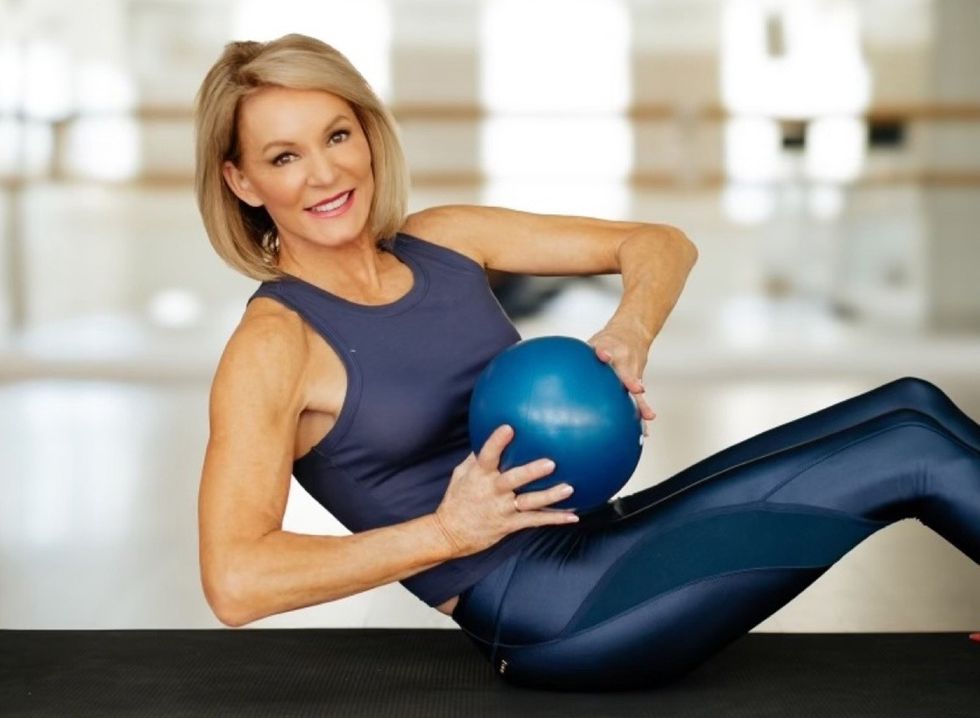 Liz Hilliard
Liz Hilliard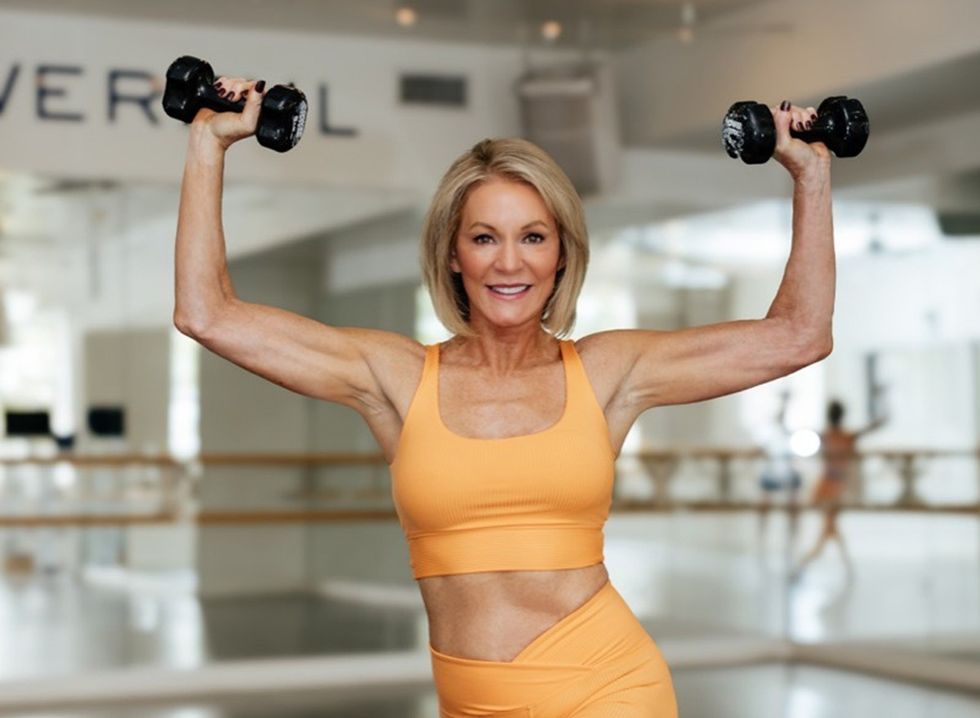 Liz Hilliard
Liz Hilliard Liz Hilliard
Liz Hilliard Shutterstock
Shutterstock Liz Hilliard
Liz Hilliard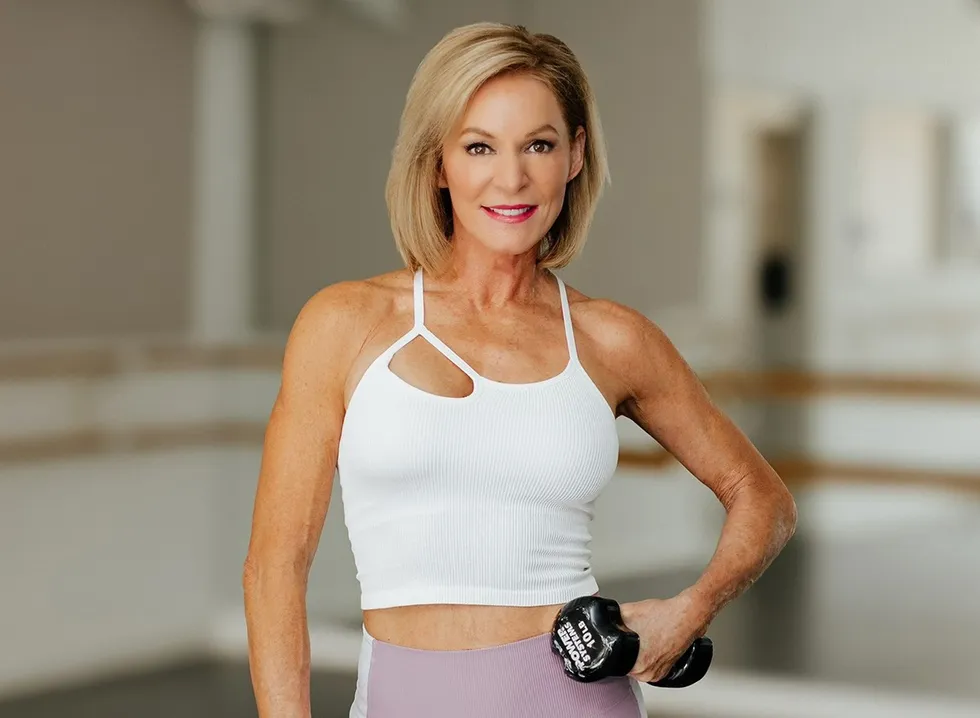 Liz Hilliard
Liz Hilliard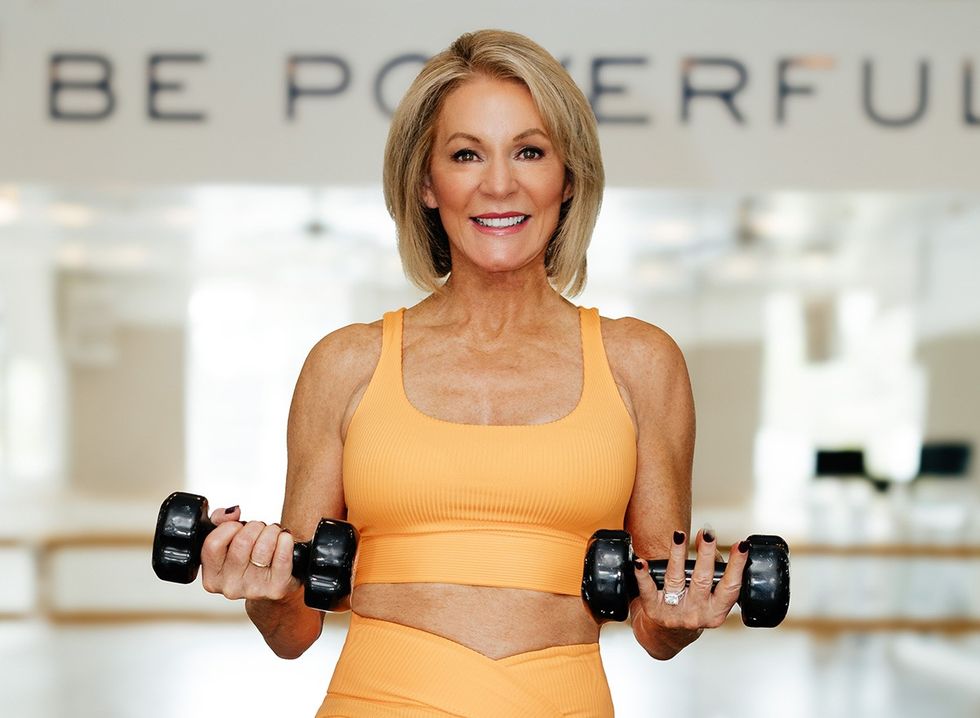 Liz Hilliard
Liz Hilliard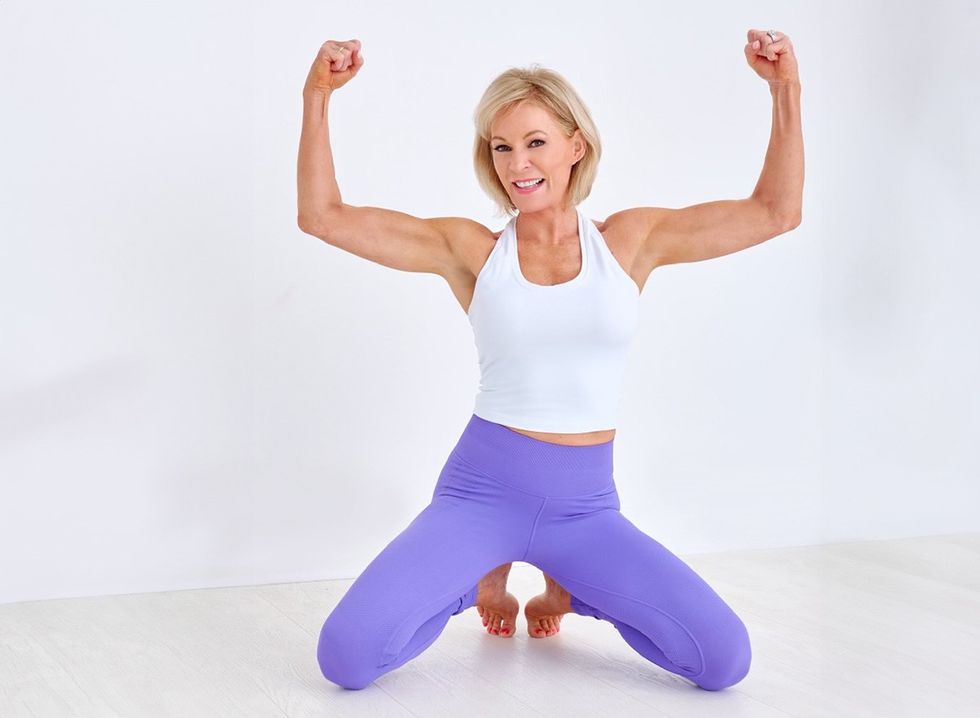 Liz Hilliard
Liz Hilliard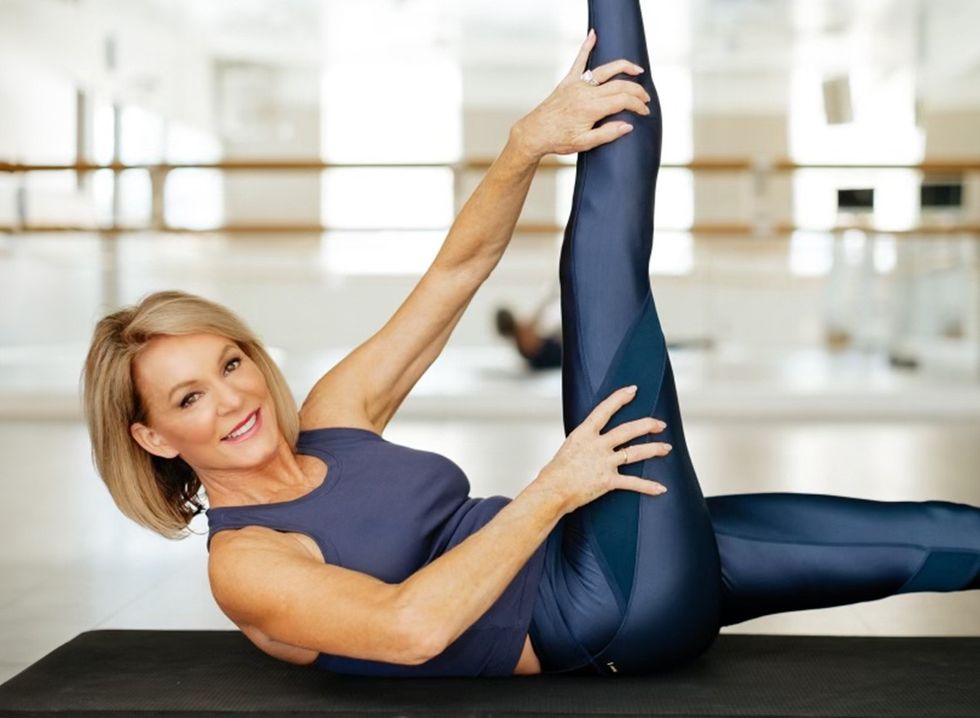 Liz Hilliard
Liz Hilliard Shutterstock
Shutterstock
 Shutterstock
Shutterstock Shutterstock
Shutterstock Shutterstock
Shutterstock Shutterstock
Shutterstock Shutterstock
Shutterstock Shutterstock
Shutterstock Shutterstock
Shutterstock Shutterstock
Shutterstock Shutterstock
Shutterstock Shutterstock
Shutterstock Shutterstock
Shutterstock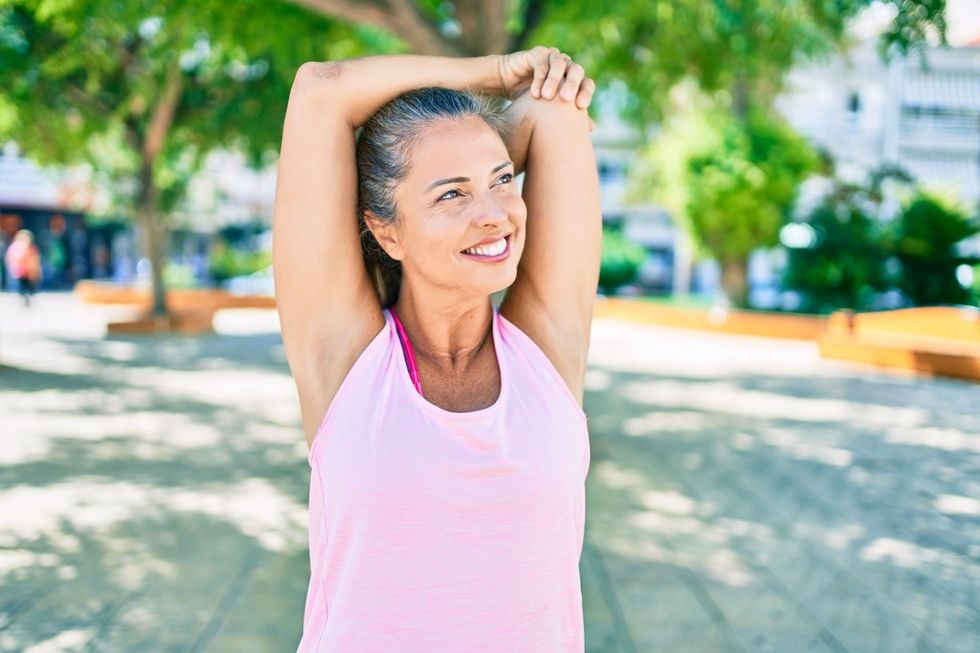 Shutterstock
Shutterstock Shutterstock
Shutterstock

 Shutterstock
Shutterstock Shutterstock
Shutterstock Shutterstock
Shutterstock Shutterstock
Shutterstock Shutterstock
Shutterstock Shutterstock
Shutterstock

 I'm a Nutritionist and These 9 High-Protein Snacks Keep My Clients Full While Losing 50 Pounds
I'm a Nutritionist and These 9 High-Protein Snacks Keep My Clients Full While Losing 50 Pounds
 Shutterstock
Shutterstock 2. Processed FoodsShutterstock
2. Processed FoodsShutterstock Shutterstock
Shutterstock Shutterstock/Prostock-studio
Shutterstock/Prostock-studio Shutterstock
Shutterstock Pro TipsShutterstock
Pro TipsShutterstock Shutterstock
Shutterstock Shutterstock
Shutterstock Shutterstock
Shutterstock Shutterstock
Shutterstock Don’t Drink as Much AlcoholShutterstock
Don’t Drink as Much AlcoholShutterstock Most Women on GLP-1s Are Making a Few Common MistakesShutterstock
Most Women on GLP-1s Are Making a Few Common MistakesShutterstock Soda and Sugary DrinksShutterstock
Soda and Sugary DrinksShutterstock Shutterstock
Shutterstock Eat BreakfastShutterstock
Eat BreakfastShutterstock And Improve Insulin SensitivityShutterstock
And Improve Insulin SensitivityShutterstock Belly Flab Strip Tip: Sugar and Fat Calories Leave Its Mark on Your BodyShutterstock
Belly Flab Strip Tip: Sugar and Fat Calories Leave Its Mark on Your BodyShutterstock Shutterstock
Shutterstock The Drugs Mimic the GLP-1 Hormone Naturally Produced by the BodyShutterstock
The Drugs Mimic the GLP-1 Hormone Naturally Produced by the BodyShutterstock 3. Deep-Fried ItemsShutterstock
3. Deep-Fried ItemsShutterstock